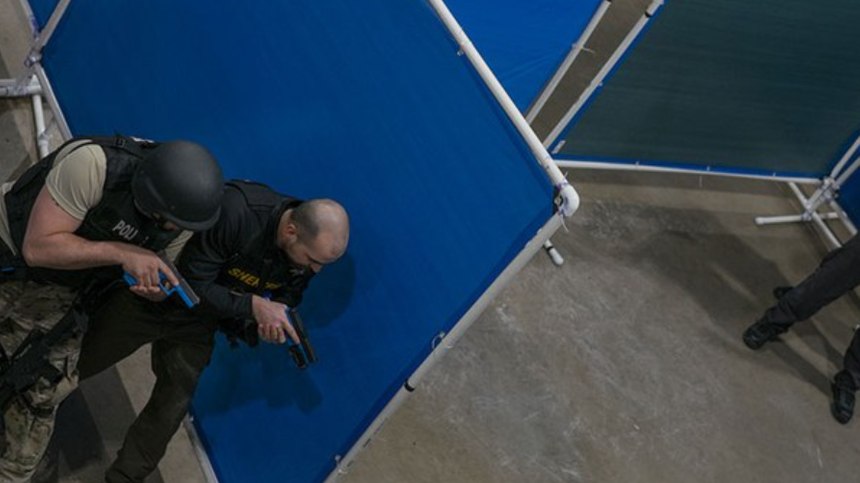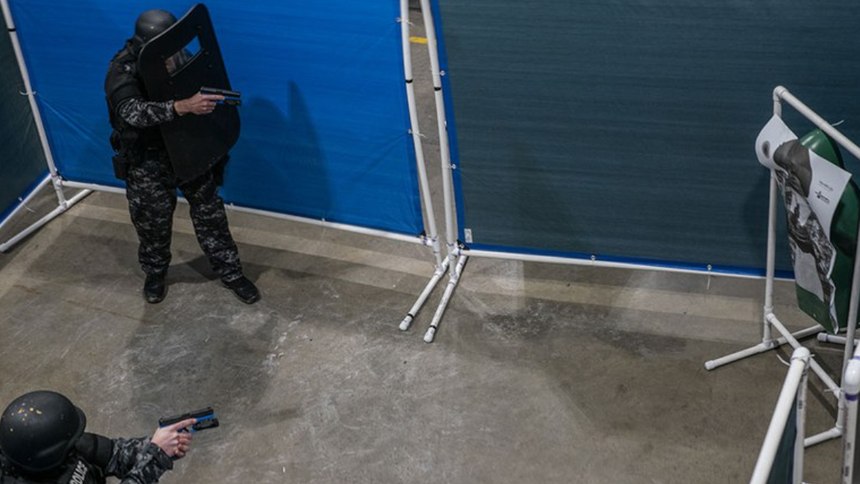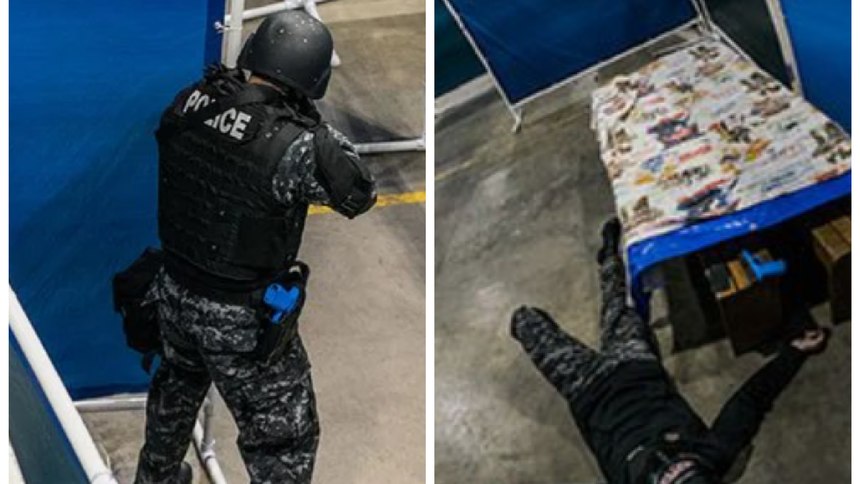Reprinted with permission from FBI Law Enforcement Bulletin
By James Nightingale
Police agencies strive to withstand public scrutiny and build trust among the communities they protect. However, finding ways to improve training for officers, especially pertaining to high-risk, low-frequency calls, always has presented a challenge. Now, more than ever, with police budgets being cut, agencies must determine how to continue this needed training. They ought to either modify or modernize their policies and procedures to promote community engagement and trust.
The call for reality-based training (RBT) has gained momentum in police training circles. Where and how often do agencies conduct this type of training? Does the whole department participate, or just specialized teams, like SWAT or HRT? Are agencies’ training as realistic as possible to ensure officers are prepared? Often, limited budgets can result in a lack of or less thorough and effective training for most officers.
One Agency’s Solution
A few years ago, the Camillus (N.Y.) Police Department (CPD) wanted to increase the exposure of as many of their officers as possible to reality-based training, especially active shooter scenarios. Funding for developing such exercises was limited and one issue kept reappearing: how to create scenarios that would more closely compare to navigating rooms in an actual building.
Years prior, the author had completed evidence technician training. In this training, the agency used portable walls around a victim or vehicle that needed processing. Based on that experience, the author thought about how he could put together walls similar to those used for crime scene work. He determined a dozen or more walls could be positioned together, forming hallways as well as both center- and corner-fed rooms.

Often, limited budgets can result in a lack of or less thorough and effective training for most officers. (Photo/James Nightingale)
Walls for Training
The building process required PVC pipe and blue tarps from a local home improvement store. After some trial and error, the author successfully built a set of 6- by 8-foot walls. Each wall was constructed using four 10-foot pieces of half-inch PVC pipe, 4½-inch PVC caps, 7½-inch PVC “T” connectors, a 6- by 8-foot general tarp, and 18-inch black plastic ties.
The first set of walls did not have the T connectors. They worked inside but proved unstable outside in windy conditions. The author added the T connectors and used extra PVC pipe with 90-degree elbows to secure or lock the walls together.
These walls were used successfully, primarily with marking cartridges, for RBT and force-on-force training. Further, the walls can be used for live fire with the addition of “shoot/don’t shoot” targets and steel inside the rooms. One person easily can lift the walls, and they can be broken down and transported quickly to be used in parking lots, gyms, or on the range with SIM rounds. Most important for budgeting concerns, these walls cost less than $80 each.

The building process required PVC pipe and blue tarps from a local home improvement store. (Photo/James Nightingale)
Additional Purposing
Local emergency service or search warrant teams also can benefit from these portable rooms. A nearby agency used CPD’s walls to recreate the layout of a house with known weapons inside where officers planned to conduct a high-risk drug search warrant. After the raid, the commander advised that they successfully made entry because the realistic walls prepared them better than putting tape on the ground.
Since that time, the other agency has built its own set of walls and now uses them in training:
We developed a reality-based training evolution utilizing [simulated ammunition] for use-of-force training. These portable walls gave our department members realistic training that challenged them to use tactics and to solve basic scenarios while using department policies and procedures as well as all the equipment they would normally carry during their work shift. The feedback was outstanding from those who completed the training.
One of the challenges for SWAT teams is a training location because the structures are owned privately or by a municipality and are scheduled to be torn down, or nothing can be damaged. These simple, portable walls allow you to design or even create a floor plan in minutes. The training location can remain the same, but the floor plan layout can change on the fly, increasing training repetition [1].

Local emergency service or search warrant teams also can benefit from these portable rooms. (Photo/James Nightingale)
Conclusion
Many agencies find themselves without available funds to create a “shoot house” to conduct training necessary to better prepare them for when a crisis occurs. Building and using portable walls by purchasing basic supplies at a home improvement store can help ensure agencies receive such training. If agencies can conduct realistic training as often as possible with minimal cost, everyone wins.
REFERENCES
1. Retired ERT Team Leader Michael Roden of the Auburn (N.Y.) Police Department, interview by author.
About the author
Captain Nightingale serves with the Camillus (N.Y.) Police Department and is a graduate of FBI National Academy Session 279. He can be reached at jnightingale@townofcamillus.com.


